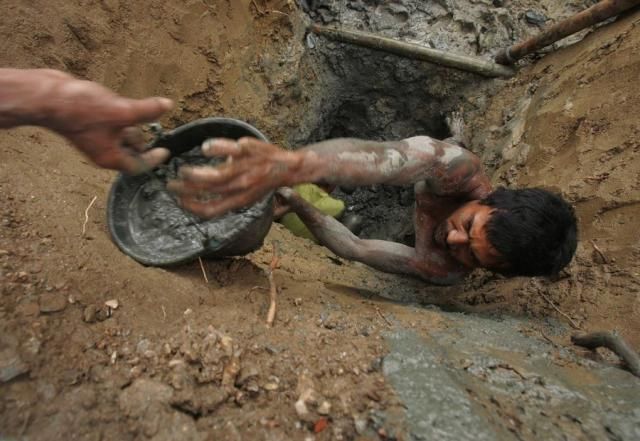
My Cocaine Museum e o carte care vorbeste despre un gand. despre un : Ce ar fi daca... Daca am putea intelege ca in spatele obiectelor de aur care exista in marile muzee ale lumii este mult pamant si oboseala si apa si truda si iar apa si saracie si alcool si ... frunze de coca. Da, frunze de coca mestecate in coltul gurii, ca sa ma treaca oboseala si tot restul. Cartea asta este un altfel de carte de antropologie. O etnografie pe care o citesti cu sufletul la gura pentru ca e in primul rand despre oameni, cu nume, cu povesti personale, istorii de viata. In Nordul Columbiei sunt oameni care muncesc cu zilele pentru un gram de aur. Aur pe care il vand imediat la magazinul din colt, pe un cantar in care de cealalta parte a balantei sta un bob - un bob de porumb. Primesc putini bani, sau mai degraba putina mancare.
Cat aur ai gasit azi?
Un gram.
Raspunsul e invariabil.
Chiar daca uneori au gasit mai mult sau mai putin. Superstitii. E multa invidie si ura si vraji de mana…
Soare, caldura, stat degeaba (decat munca ca sa muncesti, mai bine stai), sunet de muzica in surdina undeva la umbra si racoare, gust de fruze de coca mestecate intr-un colt de gura… Asta e! Ploaie...
despre water in water,
Julio arboleda’s stone,
Diging,
Mines,
“Paramilitary lover”,
Bocanegra si povestea teribila cu omul care a stat nu mai stiu cati ani in inchisoarea iaia renumita pentru ca a violat o femeie, apoi pentru ca ea l-a turnat politiei, omul s-a intors si …
im - ha!
Cica muzeul asta (My cocaine museum) ar avea un prototip - pe faimosul si extraordinarul Gold Museum care chiar exista in centrul Bogotei, cum urci la etajul 2 In Banca Republicii.
Ca sa scrie My Cocaine Museum Michael Taussig a petrecut cativa ani in Columbia si pe valea raului Timbiqui. Cartea a aparut in 2006. El si-a inceput cercetarea in 1969 si spune ca de atunci a mers acolo in fiecare an.p. X: “To walk through the Gold Museum is to become vaguely conscious of how for millennia the mistery of Gold has through myth and stories sustained the basis of money worldwide. But one story is missing. The museum is silent as to the fact that for more than three centuries of Spanish occupation that the colony stood for and depended upon was the labour of slaves from Africa in the gold mines. Indeed, this gold, along with the silver from Mexico and Peru, was what primed the pump of the capitalist takeoff in Europe, its primitive accumulation. (…) It seems so monstruously unjust, this denial, so limited and mean a vision incapable of imagining what it was like diving for gold in the wild coastal rivers, moving boulders with your bare hands, standing barefoot in mud and rain day after day, so unable to even tip your hat to the brutal labor people still perform today alongside the spirits of their parents and grandparents and of all the generations that before them had dug out the countr’s wealth. (…) The Gold Museum is also silent about the fact that if it was gold that determined the political economy of the colony, it is cocaine – or rather US prohibition of it – that shapes the country today. Not to talk about cocaine, not to display it, is to continue with the same denial of reality that the museum practices in relation to slavery. Like gold, cocaine is imbued with violence and greed, glitter that reeks transgression. What’s more, cocaine has roots in prehistory too.
(((…)))
p. XiX: But I am not that interested in museums. I find them dead and even hostile places, created for a bored bourgeoisie bereft of life and experience. What I am interested in is the life of gold and the life of cocaine where one is dying and the other is taking off (…) What interests me and I hope you too (…) is to combine a history of things with a history of people forced by slavery to find their way through these things. What things? Heat and rain, forests and rivers, stones and swamps, colour and islands – those sort of things – and especially the miasma emanating from the swamp.(…)
si dupa ce a terminat de scris cartea Taussig spune
p. 315. scriind cartea asta am sperat ca voi trezi la viata toti cei 38 de mii 500 de zei si o data cu ei, se vor sparge vitrinele.
“This is my magic and this is why we write and why we write strange apotropaic texts like My Cocaine Museum made of spells, hundreds and thousands of spells, intended to break the catastrophic spell of things, starting with the smashing of vitrines whose sole purpose is to upload the view that you are you and over there is there and here you are – looking at captured objects, from the outside. But now, no more! (…) Ghosts and gods peel back the money, back into mud, then stone – hundreds and thousands and millions of white and orange stones like eggs flowing yolk by the riverbanks all over Columbia where kids tumbling home from school in the midday heat make the stones make their jigger-jigger music, grumbling yet happy like the mad wail of the bells crying out for the dead all day long and longer still ringing in your years.”
Un comentariu:
Am sa citesc cartea asta!
Trimiteți un comentariu